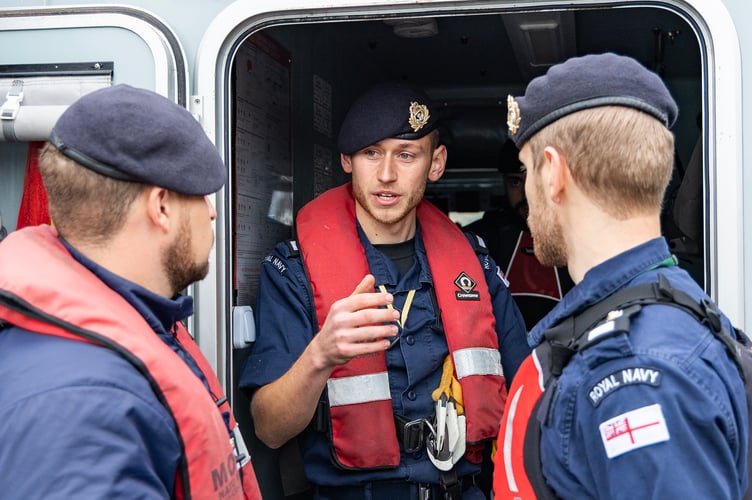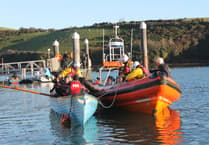The Royal Navy’s leaders of tomorrow have been put through their paces over two action-packed, demanding weeks of assessment in Devon.
Exercise Final Endeavour is the final maritime assessment of training for Officer Cadets who are hoping to earn their commissions as Royal Navy officers.
It reflects months of training at Britannia Royal Naval College, preparing future officers to lead in the modern Navy.
The assessment moves through various phases as cadets are faced with potential real-world scenarios, which are made more ‘real’ through the involvement of operational assets in addition to the fast, manoeuvrable, modern Vahana boats used by the college.
That could be an RAF A400M transporter, or small rigid-hull inflatable boats churning up the Dart estuary, or it could be a Wildcat helicopter from Yeovilton and P2000 patrol boats from along the coast at Devonport.
It allows for some more challenging and realistic training and assessment scenarios, such as a casualty evacuation.
The casualty, played by a giant orange doll known as Ruth, needed to be transferred by the cadets crewing one of the Vahana boats to patrol boat HMS Smiter for onward transfer to hospital (which bore an uncanny resemblance to Britannia College) by helicopter via a makeshift landing site cleared at Sandquay.
A winchex (winching exercise) is bread-and-butter to aircrew – it’s a mainstay of training and operations, particularly search and rescue.
It’s rarely conducted, however, with a P2000. HMS Smiter doesn’t have the comms and flight-specific equipment larger RN vessels possess to communicate and guide the aircrew.
In addition to size (or lack of it), P2000S move around a lot due to their top-heavy superstructure.
The casualty evacuation and moving Ruth from a Vahana to Smiter without further injury is a test of planning and seamanship for the Officer Cadets, the actual evacuation is a definite test of sea/airmanship for the Wildcat and P2000’s crew.
“Space on a P2000 is also at a premium which doesn’t leave much room for error on the winchmen’s part,” explained Lieutenant Sam Charleston, Smiter’s Commanding Officer.
“While we do mitigate snagging hazards by removing some upper deck fittings, such as the Jackstaff, the aircrew must work hard to get onto the deck safely.
“P2000s seldom get to practise live winching so this serial provided my ship’s coy with an opportunity to put theory into practice – while demonstrating to the Officer Cadets on exercise what Royal Navy assets can achieve.”
Lieutenant Zoe Jones, Maritime Leadership Training Officer, said including operational assets raised the bar considerably for the cadets, who have not yet been to sea in a front-line warship, and expanded the opportunities for their assessment with the exercise running over several days.
“One of the Officer Cadets turned to me as the Wildcat flew over to rendezvous for the winching exercise and told me that they didn’t think that it would be real,” she said.
“For them to be able to speak to the aircraft for intelligence gathering is all new, let alone embarking a liaison officer on to a P2000, clearing a helicopter landing site and evacuating the ‘casualty’ to Sandquay an hour later.”
Smiter has continued to support Final Endeavour, playing the ‘high value asset’, conducting survey operations for the cadets in the Vahanas to protect them from attack.





Comments
This article has no comments yet. Be the first to leave a comment.